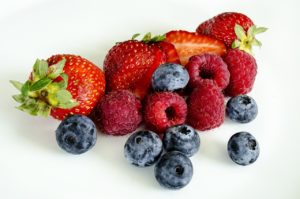The low Fodmap diet is exceptionally complex and few people get it right. That means they give up and turn away from a diet that could save them from their IBS symptoms. In today’s video, I give you 10 quick-fire tips for the low Fodmap diet so that you can work on getting it right in all its aspects.
10 Quickfire Tips for the Low Fodmap Diet
Welcome to this video. Today I want to give you 10 quick fire tips for the format diet. My name is Suzanne Perazzini, and I’m a certified nutritional therapist and a trained teacher. I’m also the author of three low Fodmap cookbooks and the creator of two low Fodmap coaching programs. Today, I want to give you 10 quick fire tips for the low Fodmap diet, things that you might not know about that are really essential if you want to be successful with this complicated diet.
- Make sure that you have five small meals a day. You have to keep them small because unfortunately our digestive system can’t tolerate large amounts of food at any one time but in order to get enough calories and nutrition during the day we need to have five meals.
- Keep those meals round about three hours apart. That gives time for the mobility cleansing wave to pass through the body but not enough time for very much gas to accumulate due to the digestive system being empty.
- Make sure you have your breakfast as soon as you get up or at least within 30 minutes so that you don’t have gas accumulating because you’ve already been without food in your gut all night plus several hours before that. So make sure you eat within 30 minutes of getting up.
- Make sure that you leave three hours after eating before you go to bed so that most of the digestion has already happened and you won’t be feeling the effects of the digestion while you’re trying to sleep and that could give you a restless night.
- Make sure that you watch how much fiber you’re getting. We need fiber in our diet but too much fiber will cause symptoms of bulging and gas etc. So increase your fiber levels really gradually until you get to the point where you’re just about to get symptoms and stop at that level.
- It is exactly the same with fat. We need fat, every cell in our body needs fat and that’s one of the three macronutrients but too much fat and we will have IBS symptoms, so again, go easy on it. For example, we can have around about four ounces/125 grams of protein meat but salmon, for example, is a very oily fish and I suggest that you have much lower than that allowed amount to make sure you don’t get too much fat in the one meal. The same with things like peanut butter which is very oily even though the permitted amount is two tablespoons I wouldn’t suggest you had that much all at once.
- If possible have dairy lactose free milk. It has far more nutrients than any of the alternatives like almond milk or rice milk or hemp milk and also it doesn’t have the additives that are always in rice, hemp, and almond milk. However, if you have a problem with the casein in milk, which is the protein part as opposed to the lactose, which is carbohydrate part then, of course, have one of the alternative milk but make sure you find one without sugar and as few additives as possible.
- Make sure that you get eight hours of good quality sleep every night and that you create a really nice sleep routine for yourself, going to bed at the same time every night and getting up at the same time every morning. Your body will thank you for that and it will reduce your IBS symptoms as well.
- Stress is really detrimental to those of us with IBS and we will get symptoms even if we’re eating perfectly on the low Fodmap diet, so the best, simplest, and most effective method to deal with stress when it comes along is deep rhythmic breathing, which forces the body into thinking that there is no stress after all. So, at any moment when you feel stressed, small or big, just take a few good deep rhythmic breaths to calm your body down.
- Make sure every one your meals is a balanced meal. Have protein, which will give you long lasting energy, a carbohydrate either from a starchy vegetable or a grain, which gives you quick energy so that you’re balancing out with that longer energy of the protein. Also make sure that you have one of the lower carbohydrate vegetables like zucchini or spinach or cabbage from the permitted vegetable list. And that’s because we need five to six vegetables a day and in order to get that many, we have to spread them out over the five meals. Also there is one last little tip, have two fruits a day but probably not too much more than that.
Thank you for watching, I hope those tips have helped you and goodbye.




Leave a Reply